
Hyundai continues to gain ground quickly in the Australian market, but if there’s one segment in which it cannot afford to let up, it’s the ultra-important mid-size SUV space.
It's a space that Hyundai has struggled to dominate to this point, but it's hoping to change that with the latest iteration of its Tucson medium-sized SUV.
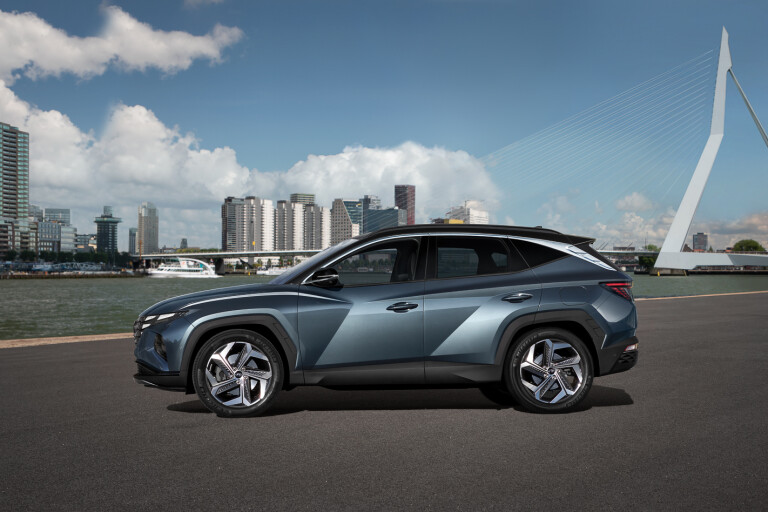
Not only does the newcomer sport a radical redesign, but it’s been kitted-out to the nines in order to keep up with a brace of well-equipped foes.
The dramatic changes, both inside and out, should be enough to worry some of the established competition including the Mazda CX-5, Subaru Forester, as well as the car that currently tops the charts, the Toyota RAV4.
Toyota's evergreen SUV continues to pull away from its competition in the sales race, twice netting the title of best-selling car in the country in recent months.
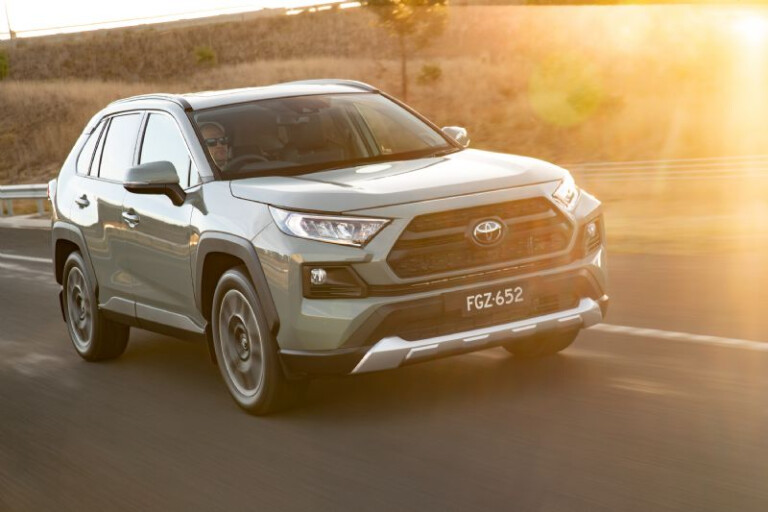
Can it hang onto its enviable position, or is Hyundai poised to pounce with the wild new Tucson? Let’s pit them head to head on specs ahead of an in-the-metal comparison when the Tucson arrives in early 2021.
Equipment/Technology
The new Hyundai Tucson will come to market packed with all the latest in technology, headlined by a pair of 10.25-inch infotainment screens – one for the digital instrument cluster and one for the central infotainment.
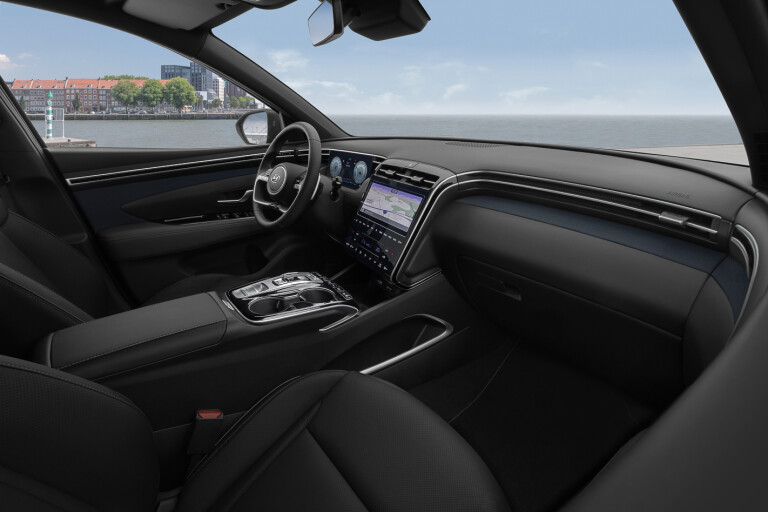
Below the infotainment in the centre stack lies a touch-capacitive panel controlling the car’s climate system, which is said to be benchmarked against airplane air-conditioning systems – timely during the coronavirus pandemic.
Other interior highlights include smartphone mirroring (a Hyundai staple), as well as colour ambient lighting, a premium Bose sound system, active cruise control, safe exit warning for the doors, digital key functionality to control the car using a smartphone and car-to-home capability which can potentially fire up home systems like air-conditioning and lights.
Gear shifts are managed by a cool-looking panel on the centre console, giving the new Tucson a futuristic feel. Rear-seaters will get vents, climate control and USB charge points, as well.
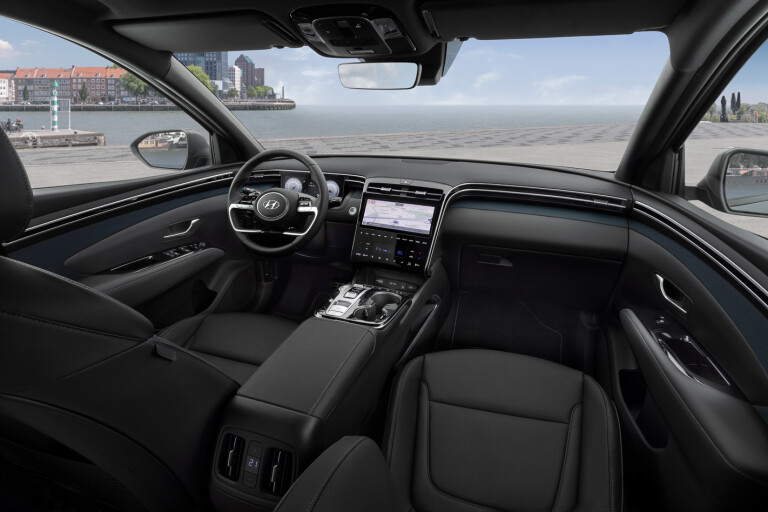
Safety is well covered-off, with Hyundai’s ‘SmartSense’ suite of pre-sensitive safety features providing active cruise control with stop/go function and lane-keep assist, autonomous emergency braking (AEB) with pedestrian detection, driver attention warning, high beam assist, rear-cross traffic alert with braking and blind-spot monitoring.
Hyundai hasn't confirmed anything in terms of pricing for the 2021 Tucson yet, but it's expected to mirror the current three-grade range to a degree.
The Toyota RAV4 is also well-equipped with a functional interior displaying an 8.0-inch infotainment screen which can run smartphone mirroring, a 7.0-inch screen takes the instrument cluster digital, wireless phone charging, nine-speaker JBL audio and heated and cooled seats.
Active cruise control, collision detection and AEB is standard on all cars, along with seven airbags, a rear-view camera, lane-departure warning, blind-spot monitoring, rear cross-traffic alert, front and rear parking sensors, speed sign recognition and auto high beam.
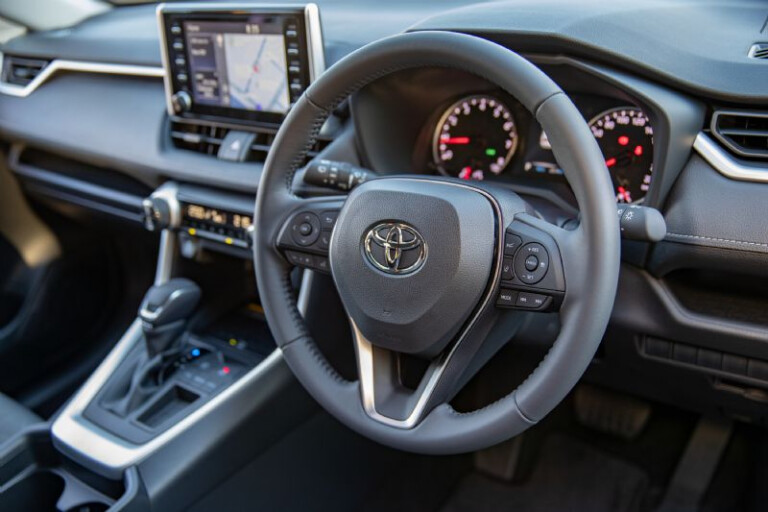
Active cruise control is on offer, lane-keep assist helps control the car on highways and a top-down 360-degree parking camera is available.
Engines/Drivetrain
In addition to the design and equipment changes, Hyundai has also refreshed its suite of engines offered with the Tucson.
While the current Tucson range offers a naturally aspirated 2.0-litre petrol and turbo diesel of the same size, the 2021 Tucson introduces a 2.5-litre naturally aspirated four-cylinder and hybrid technology along with a returning 1.6-litre turbo in hybrid form.
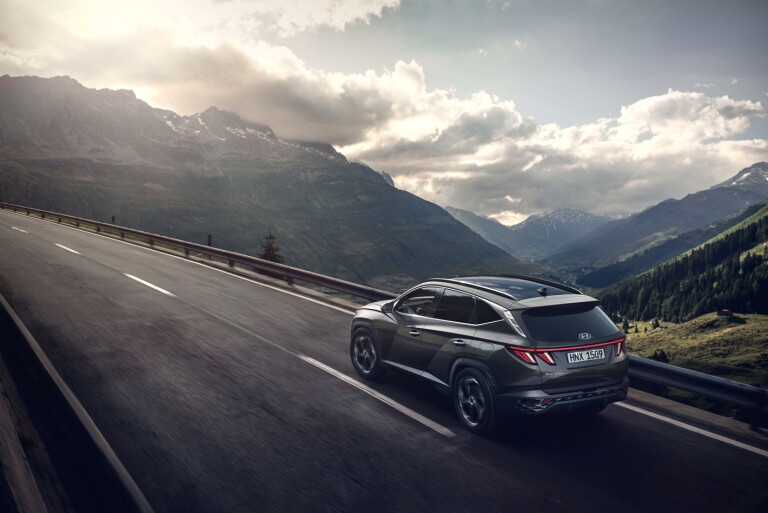
With the capacity increase, the non-turbo engine gets a performance boost from 122kW/205Nm to 141kW and 246Nm. With its new hybrid assistance, the 1.6-litre turbo four-cylinder power rises to 171kW and 348Nm combined.
An eight-speed automatic transmission will be offered with the 2.5-litre petrol but Hyundai has not detailed gearbox options for other engines.
Will there be a manual Hyundai Tucson? Don't bet on it this time around, though a base-model version may be made available with a six-speed manual.
It’s likely the option of front-wheel drive as well all-wheel drive will be offered depending on the engine and transmission combination, as per the current line-up.
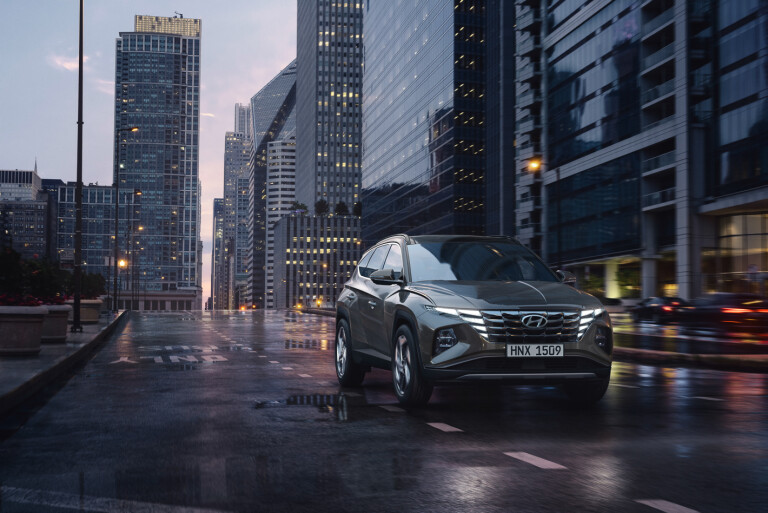
While the hybrid powerplants will be on the menu for overseas markets, Hyundai has stopped short of providing a full run-down of Australian engine options.
We understand the Australian line-up will be a more conservative offering that mirrors the current three-engine range, but both hybrids are under consideration.
Toyota, of course, does have a hybrid engine readily available and it’s selling its socks off – one of the most popular variants in fact.

Three engines are available in the RAV4 range which includes a 127kW/203Nm 2.0-litre naturally-aspirated petrol four-cylinder, a 2.5-litre petrol/electric engine that outputs 163kW and a 2.5-litre naturally-aspirated petrol engine with 152kW and 243Nm.
The entry-level 2.0-litre engine is exclusively paired to a front-wheel drivetrain, the hybrid powers both front- and all-wheel drive versions and the 2.5-litre petrol is only available with the all-wheel drivetrain.

Space/Platform
While overseas markets will see both a short and long wheelbase Tucson, Aussies will only receive the latter which includes seating for five.
The long-wheelbase car bound for Australia is 4630mm in length and is longer in all measurements but height, overall.

Hyundai says the new Tucson will offer 1095 litres of boot space with the second row folded, and it’s said to be roomier in the cabin itself, in comparison to its predecessor. There’s also plenty of storage nooks on offer.
The RAV4 is marginally shorter overall at 4615mm, but is packaged more smartly in comparison to its predecessor with a longer wheelbase affording extra space for occupants, especially those in the second row.
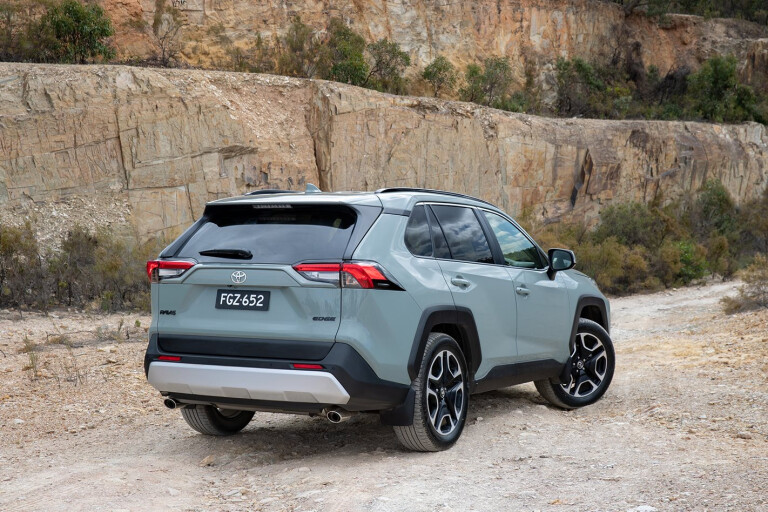
Boot space is recorded as 580 litres with the second row up, which expands to 1690 litres with the second row folded.
Though both brands usually subscribe to the VDA standard of boot measuring, we suspect that the Hyundai’s boot capacity figure needs some clearing up, and will compare much more favourably with the RAV4’s once we’re comparing apples to apples.
Price/Ownership
Pricing hasn’t been detailed just yet for the new Tucson, but Hyundai will need to price the new version keenly if it wants to become a more prominent player in the mid-size SUV space.
We wouldn’t be surprised, however, to see a relative price rise for the Tucson, considering the extra level of equipment included on this generation.
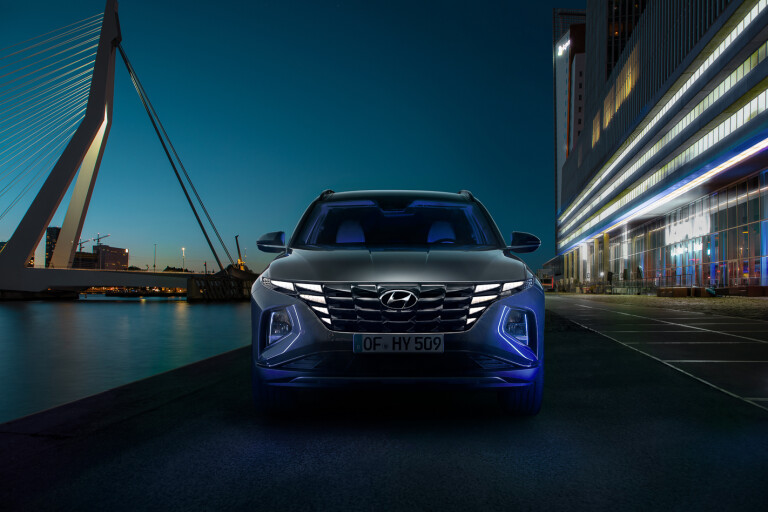
A five-year/unlimited-kilometre warranty is offered on all Hyundais, which the new Tucson will inherit, along with fixed-price servicing.
Currently, the cost to service a 2.0-litre petrol-powered Tucson works out at around $306 per service over the first five years.
To give some indication, Toyota’s RAV4 range kicks off at $32,695 (before on-road costs) currently for an entry-level model and reaches up to $48,915 (before ORCs) for the range-topper.
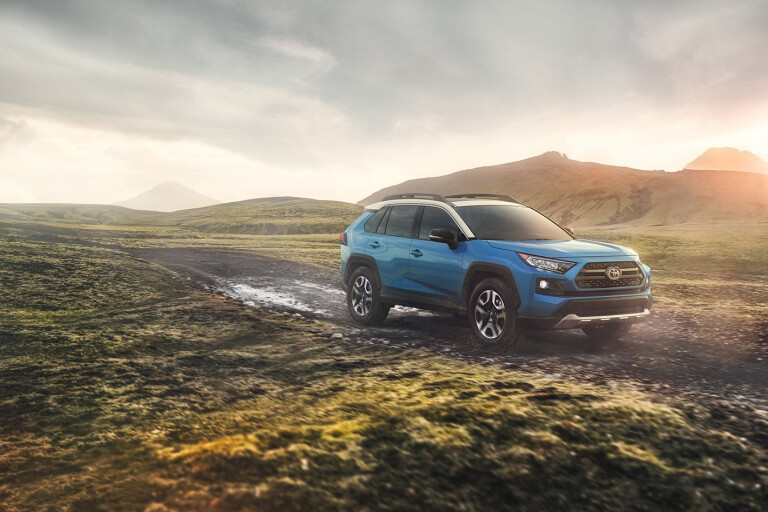
Toyota provides an identical five-year/unlimited-kilometre warranty for the RAV4, while its first six services are capped at $180 each.
Conclusion
Toyota offers a mighty-strong product in the current generation RAV4 and although it’s pricier than some rivals, Toyota isn’t struggling to find buyers. Any newcomer will need to be on its game in order to upset the status quo.
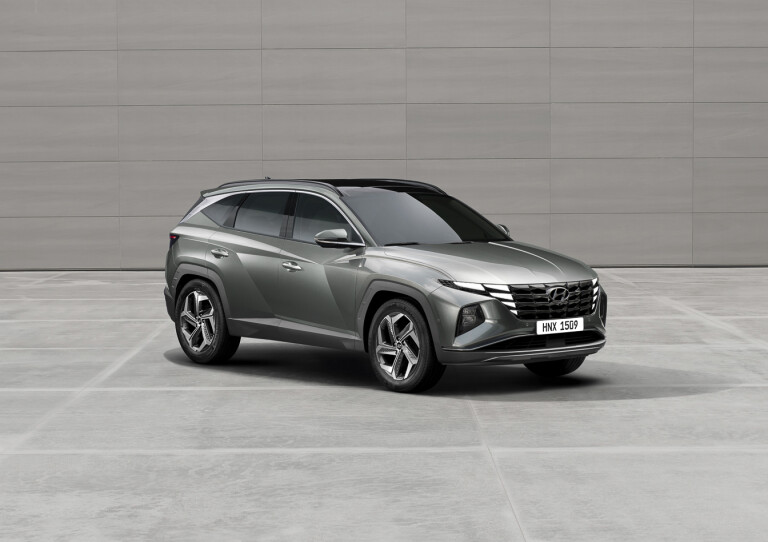
Hyundai's current Tucson is a pretty underrated vehicle, with Hyundai insiders admitting it needed to work harder for the brand than it has done.
However, with a concerted push to give the latest Tucson bold styling, extra technology and new powertrains, Hyundai is clearly shaping up for a fight with Australia's best-selling car.
If Hyundai can keep prices under control while properly promoting a new era of technology and equipment with the new Tucson, it might be able to grab a larger slice of the mid-size SUV sales pie, snagging some sales from Toyota in the process.

COMMENTS